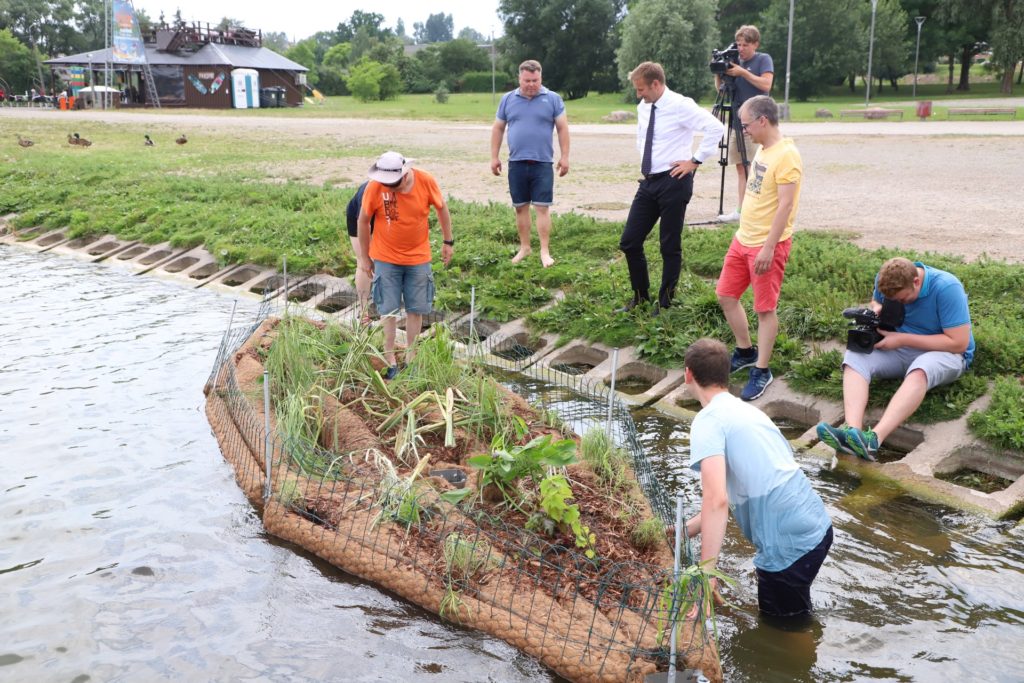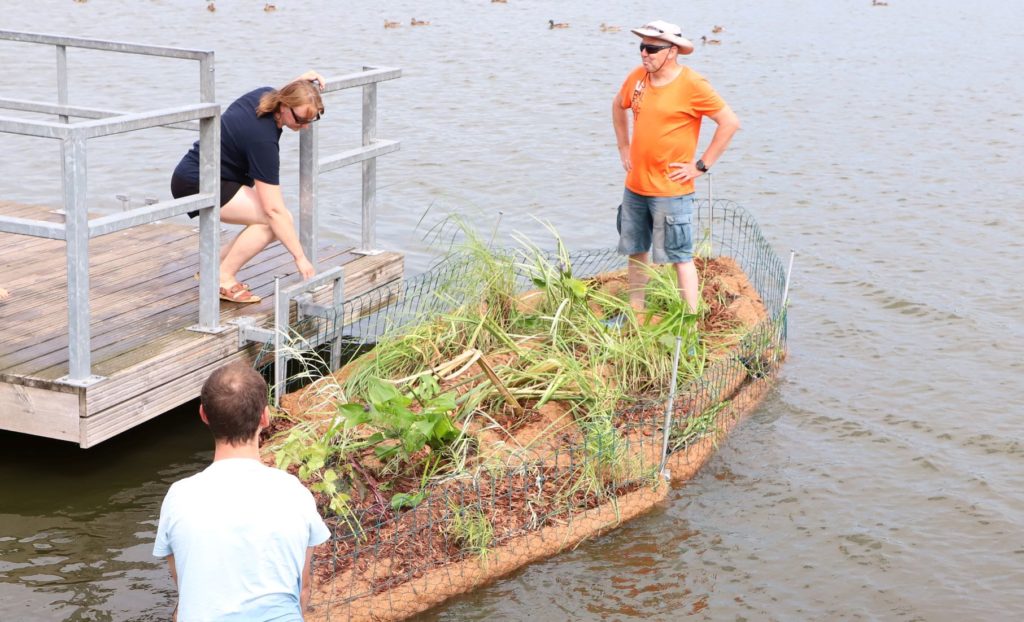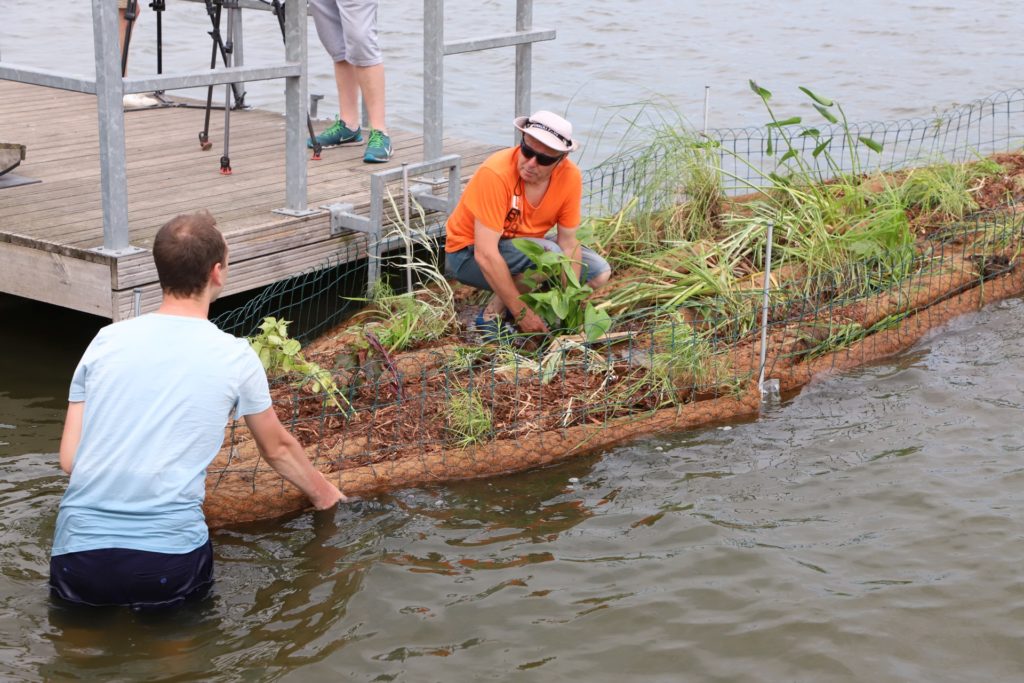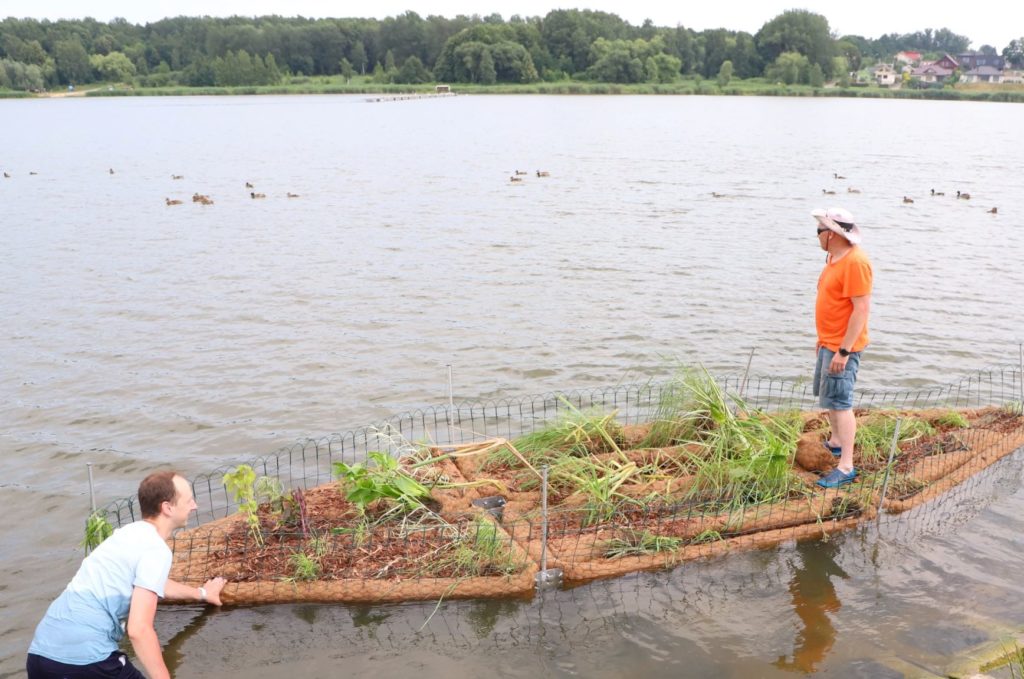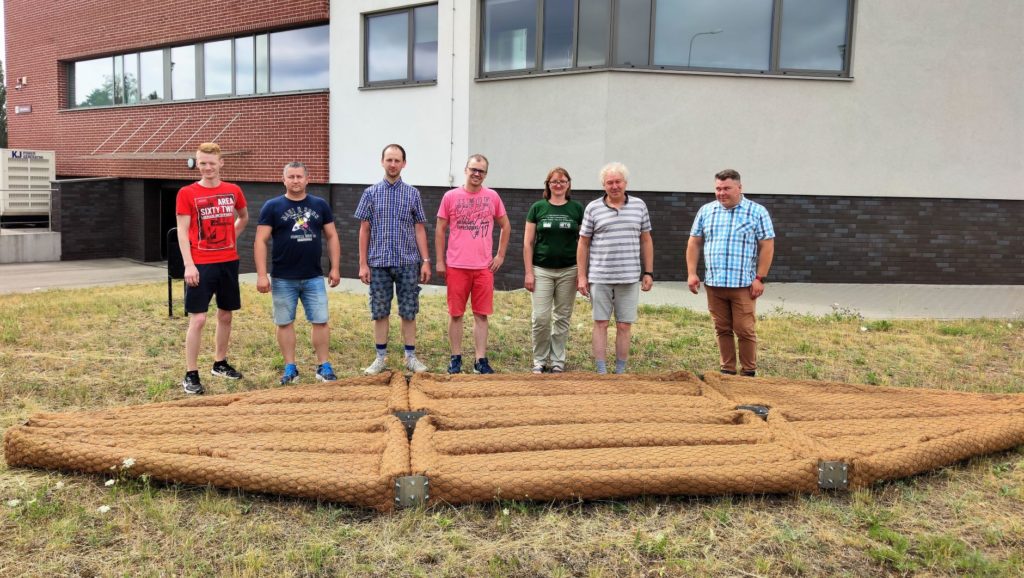An artificial island built by researchers of Klaipėda University
The other sustainable solution for improving water quality – an artificial island built by the researchers of the Marine Research Institute of Klaipėda University left for Lithuanian city Šiauliai. It will soon add variety to the landscape of this city Talkša Lake. Beside the landscape enrichment function, experimental islands have another, ecological, mission – the vegetation growing on them uses nitrogen and phosphorus compounds, the excess of which promotes the eutrophication of water bodies.
KU researchers are happy about the success of the project of building artificial islands, launched in 2019 in collaboration with German and Polish partners: the geography of such islands in Lithuania has been expanding. For a couple of years, two artificial islands in the Klaipėda region have been successfully performing the function of water quality improvement. The constructions for the first three islands were brought to Lithuania from Scotland, while the latest one, soon to be going to Šiauliai, has already been built by a team of KU researchers.
“The overall dimensions of the island are as follows: the length is approximately 6,300 mm, and the width, 1,800 mm. The structure consists of 6 segments: pipes that provide buoyancy to the structure, structural, load-bearing stainless steel mesh, coconut fiber casing, the supporting galvanized, painted mesh, and stainless steel fittings. The buoyancy of the structure was tested at the KU Marine Research Institute under laboratory conditions. The island differs from its analogues, as the present versions on the market have a large number of plastic parts which get decomposed by direct sunlight, and microplastics thus pollutes the water body. Our structure does not have plastic parts directly exposed to sunlight,” says dr. Artūras Tadžijevas, head of the island building team.
Prof. Artūras Razinkovas-Baziukas, head of the Livelagoons International Project, explains that, after placing the island in Talkša Lake, water samples will be taken. Later, the waters around the island will also be monitored. “We have to understand that the island of twenty square meters and the vegetation planted on it will not result in a revolutionary change in two or three years. A quick effect in a lake of that size would call for at least 10 of such islands. Still, this way of water quality improvement is very convenient: after assembling the island in the water, one has no more worries; it passively performs its function, while any other technological water treatment equipment needs constant maintenance. At the same time, the island functions both as a lake landscape feature and a refuge for birds, fish, and other organisms. In this way, the island serves to restore biodiversity in urbanised water bodies,” says prof. Artūras Razinkovas-Baziukas. According to him, artificial islands as a means of improving the ecological status of water bodies have been increasingly gaining popularity throughout Europe.

